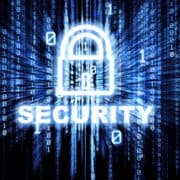How to maintain cybersecurity for ERP systems
Enterprise Resource Planning (ERP) systems are a complex infrastructure for your business. Your important data is housed in these systems, thus they need to be secure. With the latest trend of moving to cloud ERP coupled with the rise of cyberattacks, it is now more than ever important to ensure proper security to your ERP systems from any potential threats. Juan Pablo Perez-Etchegoyen, chief technology officer of cybersecurity company Onapsis, shares an article on WaterWorld.com highlighting four simple steps for water utilities – and to the extent every industry – to protect their ERP systems from cyberattacks.
- Gain visibility into ERP landscapes. “Organizations need comprehensive visibility into their cloud, on-premises, and hybrid environments to identify, assess and prioritize risks while eliminating system blind spots. Security teams require tools for real-time monitoring of business-critical applications to preemptively detect threats and vulnerabilities, even before vendor patches are available. ERP applications’ complexity demands inclusion in business continuity and incident response plans.”
- Utilize actionable threat intelligence. “In addition to collaborating with government agencies, utility organizations should explore solutions that offer a comprehensive perspective on threats affecting their operational systems. Timely and impactful threat intelligence can provide valuable insights into malicious actors’ tactics, techniques and procedures. Such intelligence can also offer early warnings about emerging ransomware campaigns, while delivering actionable information to the security teams entrusted with crafting and enacting security measures.”
- Streamline patch management, cloud migration. “Effective management of ERP applications, particularly regarding patching, is paramount for minimizing vulnerabilities. Given the rapid exploitation threats, especially for SAP systems, a streamlined patch management process is crucial. A dedicated vulnerability management solution focusing on the application layer helps identify missing patches, validates proper application and facilitates prioritization based on severity.”
- Harmonize security and compliance functions. “Ensuring the security and compliance of ERP business applications is crucial as they handle sensitive data, including financial, customer, employee and intellectual property information. However, identifying risks to these systems is often challenging and manual. Utilities organizations, responsible for delivering critical services and adhering to numerous industry regulations, face legal and financial penalties for non-compliance. Regulations such as the General Data Protection Regulation (GDPR), Sarbanes-Oxley Act (SOX), and Foreign Corrupt Practices Act (FCPA) impose strict requirements, and non-compliance can result in severe consequences, including substantial fines, data breaches and damage to public trust.”
Addressing threats in ERP applications as early and often as possible is essential to mitigate the risk of data manipulation and financial turmoil as well as ensuring adherence to regulatory standards.



Leave a Reply
Want to join the discussion?Feel free to contribute!